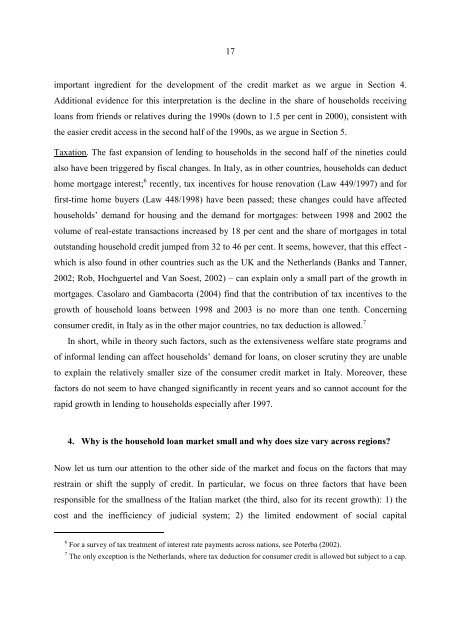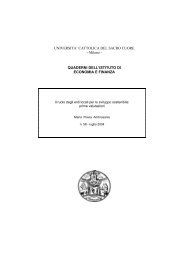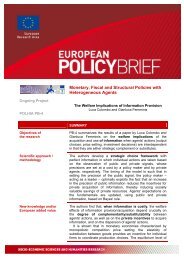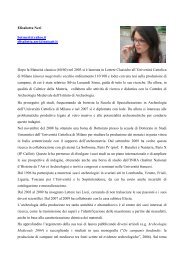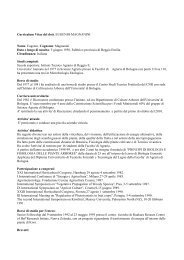REGULATION, FORMAL AND INFORMAL ... - ResearchGate
REGULATION, FORMAL AND INFORMAL ... - ResearchGate
REGULATION, FORMAL AND INFORMAL ... - ResearchGate
You also want an ePaper? Increase the reach of your titles
YUMPU automatically turns print PDFs into web optimized ePapers that Google loves.
17<br />
important ingredient for the development of the credit market as we argue in Section 4.<br />
Additional evidence for this interpretation is the decline in the share of households receiving<br />
loans from friends or relatives during the 1990s (down to 1.5 per cent in 2000), consistent with<br />
the easier credit access in the second half of the 1990s, as we argue in Section 5.<br />
Taxation. The fast expansion of lending to households in the second half of the nineties could<br />
also have been triggered by fiscal changes. In Italy, as in other countries, households can deduct<br />
home mortgage interest; 6 recently, tax incentives for house renovation (Law 449/1997) and for<br />
first-time home buyers (Law 448/1998) have been passed; these changes could have affected<br />
households’ demand for housing and the demand for mortgages: between 1998 and 2002 the<br />
volume of real-estate transactions increased by 18 per cent and the share of mortgages in total<br />
outstanding household credit jumped from 32 to 46 per cent. It seems, however, that this effect -<br />
which is also found in other countries such as the UK and the Netherlands (Banks and Tanner,<br />
2002; Rob, Hochguertel and Van Soest, 2002) – can explain only a small part of the growth in<br />
mortgages. Casolaro and Gambacorta (2004) find that the contribution of tax incentives to the<br />
growth of household loans between 1998 and 2003 is no more than one tenth. Concerning<br />
consumer credit, in Italy as in the other major countries, no tax deduction is allowed. 7<br />
In short, while in theory such factors, such as the extensiveness welfare state programs and<br />
of informal lending can affect households’ demand for loans, on closer scrutiny they are unable<br />
to explain the relatively smaller size of the consumer credit market in Italy. Moreover, these<br />
factors do not seem to have changed significantly in recent years and so cannot account for the<br />
rapid growth in lending to households especially after 1997.<br />
4. Why is the household loan market small and why does size vary across regions?<br />
Now let us turn our attention to the other side of the market and focus on the factors that may<br />
restrain or shift the supply of credit. In particular, we focus on three factors that have been<br />
responsible for the smallness of the Italian market (the third, also for its recent growth): 1) the<br />
cost and the inefficiency of judicial system; 2) the limited endowment of social capital<br />
6<br />
For a survey of tax treatment of interest rate payments across nations, see Poterba (2002).<br />
7<br />
The only exception is the Netherlands, where tax deduction for consumer credit is allowed but subject to a cap.


